Introduction
Earlier this year, electoral debate in Indonesia powered up a national discourse about the country’s intent, capabilities, and roadmap as a maritime power in the Indo-Pacific region. Indonesia’s newly installed president, Joko Widodo, popularly known as Jokowi, promised in his election manifesto in May 2014 to (1) focus on strengthening Indonesia’s maritime security, (2) expand the canvas of regional diplomacy to cover the entire region of the Indo-Pacific, and (3) project the Indonesian navy as a respected regional maritime power in East Asia.[1] He further announced in June 2014 that he aimed to transform Indonesia into a “global maritime axis” (poros maritim dunia).[2] He reaffirmed his vision after being declared victorious in July 2014 and called upon all citizens to “work together to develop Indonesia into a global maritime axis, a global civilizational hub.”[3] While taking the oath of office to become Indonesia’s seventh president on October 20, 2014, Jokowi reiterated his call to transform Indonesia into a maritime nation and invoked the slogan of “Jalesveva Jayamah” (in the ocean we triumph).[4]
Jokowi’s articulations are an important step forward in Indonesia’s effort towards developing a grand maritime strategy. His vision goes beyond the idea of merely achieving maritime security and seeks to transform Indonesia into a maritime power. He is the first president in democratic Indonesia to publicly promulgate a maritime security doctrine, taking the debate out of the pages of the policy documents and placing it into the domain of a broader politico-strategic discourse. In light of these debates and discussions, this paper examines Jokowi’s ideas and what they mean for Indonesia’s grand maritime strategy in the coming years.
Maritime Connectivity and Commerce
One key objective of Jokowi’s idea of Indonesia as a global maritime axis is enhancing inter-island connectivity and upgrading port infrastructure within the Indonesian archipelago, which encompasses thousands of islands and spans almost 6 million square kilometers. Many of these islands remain unconnected to their neighbors and and several benefit from only loose or intermittent contact. This lack of connectivity is more pronounced in the outer islands of Eastern Indonesia, such as Maluku and North Maluku. As a result, many of these islands have acted as self-sufficient economies, not contributing to or benefitting from national economic production and distribution processes. Similarly, Indonesia’s port infrastructure has suffered from neglect and financial constraints over the years. Many of the ports are in bad shape and impede the country’s internal and external maritime commerce in the form of revenue losses, time-lag, procedural delays and inadequate port facilities. According to a World Bank report, shipping a container from Padang to Jakarta costs more than three times as much shipping the same container from Jakarta to Singapore.[5] As a consequence, Indonesia’s maritime trade and commerce has failed to utilize its full potential. The nascent doctrine envisages that the revamping of the country’s maritime infrastructure, including the development of better ports and ships, could transform Indonesia into a hub of regional maritime trade and commerce. Inter-island connectivity, it is hoped, would enable effective internal utilization and prevent external poaching of maritime resources. An inter-connected archipelago could leverage Indonesia’s choke points and maritime corridors to enhance trade and commerce.
Though the idea of Indonesia as a global maritime axis may come as a novelty to many, it is not a new idea. The transport department of Indonesian government has set up a three-pronged archipelago belt project – the Northern, Middle and Southern Archipelago Belts – to connect different parts of Indonesia.[6] Maritime connectivity was an important agenda item for Indonesia during the APEC Focus Group Discussion in April 2013.[7] ASEAN also has sought to achieve inter-island connectivity through its plans of developing a “nautical highway system” or proposed “ring shipping route” in maritime Southeast Asia as a part of the Master Plan on ASEAN Connectivity.[8] Though the idea of interconnecting thousands of Indonesian islands has long existed, it received serious governmental attention for the first time in the Defense White Paper of 2003 and was further elaborated in the Defense White Paper of 2008.
Maritime Security: Minimum Essential Force (MEF) and More
There is also a security dimension to Indonesia’s attempt to better govern its maritime domain. Acutely aware of how the Dutch sought to reimpose colonialism after the Second World War by using Indonesia’s vast waterways, how Sumatran rebels engaged in seaborne political subversion during the 1957 PRRI/Permesta Rebellion, and the deployment of a Dutch aircraft carrier in the vicinity during the 1960 crisis over Irian Jaya, Indonesian leaders have struggled to come to terms with the insecurity of its proximate waterways. This sense of maritime vulnerability was more recently demonstrated in Jakarta’s reluctance to countenance excessive foreign involvement in the policing of piracy in its waters despite the operational limitations of the Indonesian coast guard.
Arising from such concerns, Jokowi’s vision also contemplates erecting a defensive firewall in the form of an advanced navy to protect the country’s maritime assets, sea-lanes and territorial waters from both non-traditional security threats and external incursions. But he does not stop there. He goes on to project Indonesia as a maritime power in the region by promising to augment Indonesia’s naval capability. He has proposed the development of an “integrated three-dimensional defense system” under a long-term strategic plan, the details of which are yet to be laid out.
It must be mentioned at the outset that Indonesia, the largest archipelagic state in the world, has naval capabilities weaker than that of the smaller powers of Southeast Asia – Singapore, Thailand and Vietnam. In 2005, under the presidency of Susilo Bambang Yudhoyono (SBY), the Indonesian government adopted the Minimum Essential Force (MEF) – a twenty-year plan (2005-2024) that sets forth a military modernization agenda, with a special emphasis on the modernization of the Indonesian navy and air force. In the context of naval build up, the MEF goal is to develop by 2020 a five-fleet force totalling 274 ships with striking, patrolling and supporting capabilities. The plan involves weapons procurement, development of an indigenous defense industry and the revamping of defense research facilities. The SBY government made some progress in reviving the Indonesian navy through procurement of warships and submarines, as well as the expansion of the operational base of the navy with the addition of three naval fleets.
Notwithstanding its modest progress, naval modernization has encountered several challenges, such as limited resources, ill-equipped infrastructure and dated defense research facilities. The navy’s strategic thinking remains rooted in a limited vision, a tight budget, and rudimentary upgrades. Though the Indonesian defense budget almost quadrupled from nearly US$2 billion in 2001 (0.5 percent of GDP) to US$8.3 billion (0.9 percent of GDP) in 2013, this figure still constitutes less than one percent of the national GDP. The failure to raise the ceiling on defense spending represents the inertia that has afflicted naval modernization. On average, major and middle powers of Asia have spent more than 2 percent of their GDP on defense every year. Indonesia’s defence budget in 2013 (US$8.37 billion) stood much lower than that of Australia (US$26 billion), China (US$112 billion), India (US$36 billion), Japan (US$51 billion) and South Korea (US$ 31.8 billion).[9]
Despite the expansion in the navy’s operational base, the implementation of the MEF has been slow and somewhat inconsistent. Indonesia’s critical defense factories, such as PT Pindad and Surabaya-based PT PAL, remain underfunded and underequipped, limiting their effective contribution. More than 70 percent of ship components are imported, with very little contribution, apart from labor, coming from the Indonesian shipbuilding industry.[10] At the same time, the government’s incentives to support the indigenous shipbuilding industry have been insufficient.[11] As a result, the idea of indigenous production of high-end technology-driven naval equipment remains a concept, not a practice. In this limiting context, the statement of the previous Indonesian defense minister, Purnomo Yusgiantoro, that Indonesia will not need to import high-technology based fighter jets and ships by 2022 seems overambitious and unrealistic.
To meet the goals of his plan, Jokowi has laid out a two-fold approach – raising the defense budget to 1.5 percent of GDP in five years, and attracting foreign investment. The allocation of 1.5 percent of GDP to the defense budget, it is hoped, would contribute the much-needed revenue for defense modernization and revival of an indigenous defense industry. Jokowi seems to have already put in motion his plan of attracting foreign investment in the development of the country’s maritime infrastructure and defense industry. During his visit to Japan in August 2014, he was able to secure a commitment from the Japanese government to assist Indonesia in building its maritime infrastructure.[12] He has also indicated that he is going to work towards extracting similar commitments from other major powers that would further strengthen Indonesia’s defense cooperation with key supplier countries, such as the United States, China, South Korea and Russia.
Correcting Archipelagic Indonesia’s Anomalous Threat Perceptions
Indonesia’s maritime security debate, once largely confined to the high gallery of government officials and strategic experts, turned into a nation-wide security discourse with Jokowi’s election manifesto and political speeches. For the first time, maritime security found wide coverage in Indonesia’s electoral debates. Since the debates, there has been a surge in popular discourse related to Indonesia’s vision. Experts and practitioners have offered various interpretations of Jokowi’s newly-floated maritime doctrine, such as “the revival of Indonesia’s archipelagic identity,” “a new hope for national maritime awakening,” and “a call for united Indonesia.”[13]
Jokowi’s maritime emphasis is an important step forward in the gradual dismantling of Indonesia’s somewhat dated security perspectives. First, the idea of maritime security and a strong navy is finding its rightful place. There is a growing understanding that the most important security challenges that the Indonesian archipelago faces are maritime in nature. These maritime challenges cannot be dealt with by the long-standing practice of an army-based territorial defense. There is a sense that Indonesia needs a strong navy as a pre-emptive and preventive strategy to thwart any external incursion and safeguard its long coastline, thousands of islands, strategic choke points, inter-oceanic trading posts and vast Exclusive Economic Zones.
The idea of maritime security as a strategic necessity returned to the forefront of national strategic thinking only after the departure of President Suharto in 1998 and the retreat of the army from the political and policing processes. It was the SBY government (2004-2014) that introduced maritime security into the mainstream national security discourse. Since then various white papers, blueprints, and defense postures with medium and long-term deadlines have been laid out. Nevertheless, Jokowi’s pronouncements contrast with such documents in the level of emphasis placed on maritime security.
While the 182-page Defense White Paper 2008 mentions the word “maritime” 19 times, Jokowi’s mere 40-page election manifesto mentions the words “maritime” 17 times, “ASEAN” seven times and “Indo-Pacific” three times. His presidency can prove to be a critical step in continuing this difficult process of correcting the fundamental anomaly in Indonesia’s grand strategy – an archipelagic state seeking security through a continental army, operating on the basis of a territorial command structure and guerrilla strategy. Indeed, with the transformation of the security situations in Aceh, East Timor, and to some extent Papua, it is timely for Indonesia to reconsider its strategic and defense priorities.
Second, Jokowi’s maritime focus also underscores an emerging political consensus that the country faces serious external security threats and must be ready to deal with them. The growing militarization of the maritime space in both the Indian and Pacific Oceans, an escalation of hostility in South China Sea, and China’s claim over Indonesia’s Natuna islands have reinforced Indonesian fears. An alarmed Indonesia has begun to deliberate how to create an adequate maritime defense infrastructure to ensure the security of its islands, maritime resources, territorial waters and exclusive economic zone. Indonesia’s then defense minister, Juwono Sudarsono, while highlighting Malaysia’s frequent naval incursions in 2006 and 2007, lamented his country’s “low level of effectiveness in acting against trespassers on land, sea and air territories.”[14]
Echoing similar sentiments, the next defense minister, Purnomo Yusgiantoro, announced on September 10, 2014 that the government would set up a defense base on the Natuna Island. He stated, “the government should naturally secure the territories that border the South China Sea because the situation in those waters has been tense since several countries such as Vietnam, China, the Philippines and Malaysia claimed the territorial waters as their own.”[15] Indonesia’s official expressions on China’s Natuna claim have remained somewhat ambivalent, both highlighting and skirting the potential of a China-Indonesia stand-off over the Natuna issue. For example, Marty Natalegawa, Indonesia’s previous foreign minister, stated in June 2014 that Indonesia was not party to the South China Sea dispute, implying thereby that its claim over the Natuna islands is absolute and uncontested. A wary Indonesia is gradually acquiring a maritime posture against external threat perceptions.
Reinvigorating Indonesia’s Long-Held Two-Ocean Doctrine
While various policy documents and white papers have laid out the logistics, modus operandi, and a roadmap for Indonesia’s maritime strategy, Jokowi’s pan-Indo-Pacific vision provides a broader geopolitical context in which these doctrines and strategies have to be operationalized. Jokowi’s Indo-Pacific vision reinvigorates Mohammad Hatta’s “between the two continents and two-Ocean worldview.” Jokowi plans to bring the Indian Ocean back into Indonesia’s regional canvas and projects Indonesia as a power straddling thousands of islands between two continents (Asia and Australia) and two Oceans (the Indian and Pacific). A segment of Indonesia’s strategic community has felt constrained by the country’s ASEAN focus and argued that Jakarta should project its regional diplomacy to a bigger constituency. Rizal Sukma, one of Indonesia’s leading strategic experts, maintains that “ASEAN is important but it is not the only one.”[16] The Indo-Pacific vision provides a mental map to steer between ASEAN and a bigger strategic landscape. In other words, Jokowi’s vision, if realized, can enable Indonesia to project itself as a maritime power in the greater Indo-Pacific region.
Jokowi’s Indo-Pacific is more comprehensive than that of former Minister Natalegawa. While presenting his vision of “Pacific-Indo-Pacific” at the Center for Strategic and International Studies in Washington in May 2013, Natalegawa followed a pragmatic and more functional definition of the region – “a triangular (space) spanning two oceans, the Pacific and Indian Oceans, bounded by Japan in the north, Australia in the South-east and India in the south-west, notably with Indonesia at its center.”[17] Jokowi, on the other hand, has followed a more comprehensive definition of the Indo-Pacific – an integrated maritime world of the Indian and Pacific Oceanic systems.[18] While Natalegawa concentrates on players and the political aspects of regional diplomacy, Jokowi focuses on geographical components of regional diplomacy. Natalegawa calls for a Pacific-Indo-Pacific, while Jokowi calls for Indonesia as a global maritime axis. Natalegawa refers to India; Jokowi talks about the Indian Ocean.
Jokowi has shown his intent to carry forward SBY’s attempt to plug an important lacunae in Indonesia’s maritime vision – the reappearance of the Indian Ocean on Indonesia’s mental map. While speaking at 2012 Shangri La Dialogue in Singapore, President Yudhoyono declared, “There is every likelihood that in the twenty-first century the Indian Ocean will grow in geostrategic importance. We must make sure that the Indian Ocean does not become an area of new strategic contest and rivalry. Indeed, now is the time to cultivate the seeds for long-term cooperation, based on common interests in that part of the world.”[19] Indonesia shares maritime boundaries of nearly 1300 kilometers (kms) in the Indian Ocean with four countries – Australia, India, Malaysia and Thailand. It has an Exclusive Economic Zone of approximately 1.5 million square kms in the eastern part of the Indian Ocean. As evidenced by SBY’s statement, the Indian Ocean has begun to figure into the regional understanding of Indonesia as a region of growth, a source of vulnerabilities, and as a platform for greater regional and multilateral cooperation.
The Indian Ocean did not receive much attention in the country’s strategic thinking until December 2004 when the country was jolted by the devastating tsunami that originated in the Indian Ocean. Indonesia’s Ministry of Foreign Affairs has incorporated the Indian Ocean Association for Regional Cooperation (IOR-ARC) as a focus area of its regional multilateral diplomacy. As a founding member, Indonesia envisages to play a pro-active role in IOR-ARC deliberations when it becomes the chair for two years (2015-2017). Currently, Indonesia is the vice-chair of the grouping and will replace Australia in 2015. Indonesia’s Indian Ocean role came into prominence in 2013 when it allowed China to conduct naval exercises, close to Australia’s Christmas Islands, in the eastern part of the Ocean.
The Indian Ocean has figured as one of the five priority agendas of regional cooperation as identified by Jokowi in his election manifesto. It revolves around engendering comprehensive maritime cooperation and playing a pro-active role within the Indian Ocean Rim Association. The inclusion of the Indian Ocean expands Indonesia’s maritime canvas and places the country, once again, at the epicenter of two maritime worlds and as a bridge between them.
The Road Ahead
Jokowi’s ambitious maritime vision faces equally powerful challenges, which are structural and deep-rooted. Modernizing an under-fed, under-equipped and under-resourced navy will require considerable political will and support, a huge amount of financial resources, technical know-how, dedicated modern research facilities, and a robust national debate to support such a mammoth task. His cabinet will be especially critical in this respect. Already, a new cabinet post of coordinating minister for maritime affairs has been created. Key ministries to provide the institutional support to Jokowi’s maritime policy would be foreign affairs, maritime and fisheries, and defense, as well as the post of coordinating minister for maritime affairs. The recent announcement of cabinet positions however, raise doubts as to whether this institutional support will be forthcoming. A competent career diplomat, Retno Lestari, has been appointed foreign minister. Her experience, however, has mostly been in European affairs. Likewise, the new maritime and fisheries minister, Susi Pudjiastuti, is an accomplished businesswoman with a background in the aviation industry. Neither have the specific experience or knowledge required to press the maritime agenda outlined by the president. Both these ministries will also have to work closely on maritime affairs with the defense ministry, now helmed by Ryamizard Ryacudu, the first military figure in 15 years to helm the ministry. A known hardliner whose human rights record has come under heavy criticism, Ryamizard derives his position not from Jokowi’s mandate but from his close association with former president Megawati Sukarnoputri. Independent of Jokowi, Ryamizard is likely to try to carve out a more prominent role for the Tentara Nasional Indonesia (TNI, the armed forces) in foreign policy, which may not necessarily be in synch with the president’s objectives.
The first five years of Jokowi’s presidency will be critical to the formation of the necessary policy framework to expedite his idea of Indonesia as a maritime power. Realizing his vision would require the convergence of several elements: (1) a blue-print that is fleshed out and debated in detail, (2) a good deal of political support inside the legislature, (3) the creation of an efficient local infrastructure for the development and production of technology and equipment, and (4) a positive international image for international investment. Currently, Jokowi does not enjoy a great deal of political support in the legislature, and Indonesia’s technological and production capabilities are limited. On the other hand, there is an abundance of international will to invest in Indonesia.
Some of these challenges could derail the consummation of Jokowi’s vision. For example, it may prove to be a much more difficult task to raise the defense spending from .9 to 1.5 percent of GDP given the fact that he does not have many friends inside the Indonesian parliament. While pursuing his objectives, Jokowi is going to have to negotiate hard to deal with a static mindset that dominates the political and defense establishment. Realizing his dream will definitely put his political and diplomatic skills to the test, at both the domestic and global levels. Indeed, he has made a great start. As the saying goes, well begun is half done.
Implications for the United States
Jokowi’s maritime resolve opens up a big space for the United States to consolidate its defense and security ties with Indonesia that had languished since the mid 1990s. Three areas figure prominently – development of maritime infrastructure, modernization of defense industries and upgrades of indigenous R&D in the defense sector. The U.S.-Indonesia Comprehensive Partnership, signed in 2010, provides for the United States a role in Indonesia’s defense modernization and facilitates Indonesia’s role in the regional and global affairs. The United States signed its biggest ever defense deal in June 2013, agreeing to sell Apache attack helicopters along with the transfer of radar technology worth more than US$500 million to Indonesia. The United States can use this momentum to consolidate both its bilateral strategic partnership and its rebalancing strategy in the largest and most powerful country of Southeast Asia.
Regional responses to Jokowi’s articulation of his maritime policy have been understandably muted. Foremost in the minds of regional leaders are the matters of both Jokowi’s bandwidth for foreign affairs and potential domestic challenges which are expected to preoccupy him in the coming years. Jokowi comes into office with very little foreign affairs experience. Indeed, notwithstanding welcome attempts to enunciate foreign policy positions, Jokowi is likely to be a president more comfortable with tackling domestic issues. This is both understandable and necessary given the magnitude of the domestic agenda, which is compounded by the fact that, at present, Jokowi presides over a minority government.
[1] Jokowi-Jusuf Kalla Vision-Mission and Action Program, (Jakarta, May 2014), http://kpu.go.id/koleksigambar/VISI_MISI_Jokowi-JK.pdf (accessed on August 20, 2014), p. 13
[2] “Jokowi supports Palestinian independence,” Republika Online, June 23, 2014 http://www.republika.co.id/berita/en/national-politics/14/06/23/n7m2m7-jokowi-supports-palestinian-independence (accessed on august 22, 2014)
[3] President-Elect Jokowi Calls for United Indonesia,” Tempo, July 23, 2014, http://en.tempo.co/read/news/2014/07/23/055595130/President-Elect-Jokowi-Calls-for-United-Indonesia (accessed on August 20, 2014)
[4] “Jokowi’s Inaugural Speech as Nation’s Seventh President,” The Jakarta Globe, Oct 20, 2014, http://thejakartaglobe.beritasatu.com/news/jokowis-inaugural-speech-nations-seventh-president/ (accessed on October 22, 2014)
[5] Henry Sandee, “Promoting Regional Development in Indonesia through Better Connectivity,” The World Bank News and Broadcast, http://go.worldbank.org/Z6VE3IDAF0, (accessed on September 24, 2014)
[6] “Archipelago Belt Aims to Connect Nation,” The Jakarta Post, May 30, 2014, http://www.thejakartapost.com/news/2014/05/30/archipelago-belt-aims-connect-nation.html (accessed on August 23, 2014)
[7] A Fitriyanti Pewarta, News Focus – Big Agenda, Maritime Infrastructure Towards Indonesia, APEC Connectivity,” Antara News, April 9, 2013 http://www.antaranews.com/en/news/88298/news-focus–big-agenda-maritime-infrastructure-towards-indonesia-apec-connectivity (accessed on August 22, 2014)
[8] Master Plan on ASEAN Connectivity, (Jakarta: ASEAN Secretariat, 2013), p. 40
[9] “Chapter Six: Asia,” The Military Balance, vol. 114, no. 1, 2014, p. 222-286
[10] Amir Tejo, “Imported Components Dominate Shipbuilding Industry,” Tempo English Online, May 14, 2014, http://en.tempo.co/read/news/2014/05/14/056577719/Imported-Components-Dominate-Shipbuilding-Industry (accessed on September 24, 2014)
[11] Linda Yulisman, “Shipbuilders struggle to meet production targets,” The Jakarta Post, August 14 2013, http://www.thejakartapost.com/news/2013/08/14/shipbuilders-struggle-meet-production-targets.html (accessed on September 24, 2014)
[12] Deti Purnamasari, “Jokowi Asks for Japan’s Help on Infrastructure Projects,” The Jakarta Globe, August 12, 2014, http://www.thejakartaglobe.com/business/jokowi-asks-japans-help-infrastructure-projects/ (accessed on August 22, 2014)
[13] Evan A. Laksmana, “Indonesia’s New President Can Deepen Cooperation with Europe and the United States,” German Marshall Fund Blog, http://blog.gmfus.org/2014/08/15/indonesias-new-president-can-deepen-cooperation-with-europe-and-the-united-states/ (accessed on August 20, 2014); “Jokowi-JK brings new hope for maritime awakening: academician,” Antara News, August 20, 2014, http://www.antaranews.com/en/news/95371/jokowi-jk-brings-new-hope-for-maritime-awakening-academician (accessed on August 23, 2014); President-Elect Jokowi Calls for United Indonesia,” Tempo, July 23, 2014, http://en.tempo.co/read/news/2014/07/23/055595130/President-Elect-Jokowi-Calls-for-United-Indonesia (accessed on August 20, 2014)
[14] “RI Lacks Deterrence Force: Juwono,” The Jakarta Post, 22 March 2007
[15] “Indonesia to Build Military Base in Natuna,” Tempo English Online, September 10, 2014, http://en.tempo.co/read/news/2014/09/10/055605767/Indonesia-to-Build-Military-Base-in-Natuna (accessed on September 22, 2014)
[16] Ina Parlina, The Jakarta Post, Low defense budget hampers ability,” The Jakarta Post, Low defense budget hampers ability,” The Jakarta Post, April 03, 2014, http://www.thejakartapost.com/news/2014/04/03/low-defense-budget-hampers-ability.html (accessed on September 24, 2014)
[17] Marty Natalegawa, “An Indonesian perspective on the Indo-Pacific,” The Jakarta Post, May 20, 2013, http://www.thejakartapost.com/news/2013/05/20/an-indonesian-perspective-indo-pacific.html (accessed on September 24, 2014)
[18] Jokowi-Jusuf Kalla Vision-Mission and Action Program, (Jakarta, May 2014), http://kpu.go.id/koleksigambar/VISI_MISI_Jokowi-JK.pdf (accessed on August 20, 2014), p. 13
[19] Susilo Bambang Yudhoyono, “An Architecture for Durable Peace in the Asia-Pacific,” Shangri La Dialogue Keynote Address, 01 June 2012, http://www.iiss.org/en/events/shangri%20la%20dialogue/archive/sld12-43d9/opening-remarks-and-keynote-address-9e17/keynote-address-7244(accessed on September 20, 2014)
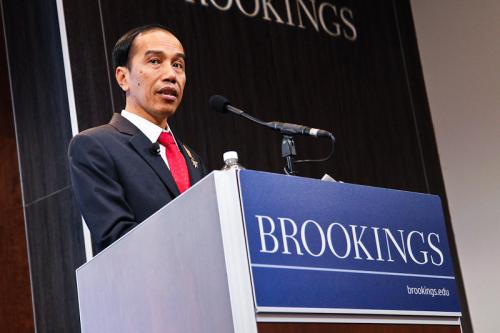
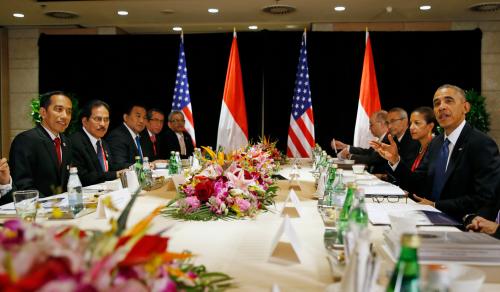
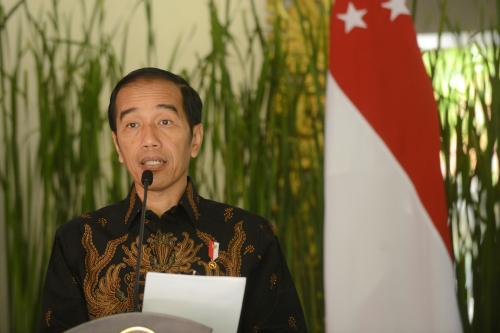
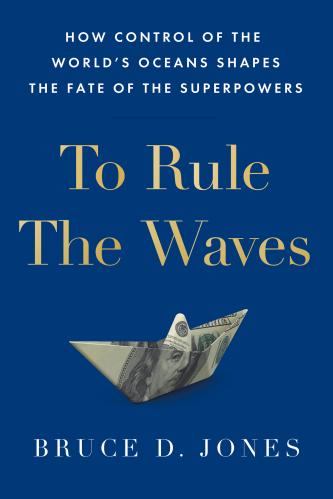
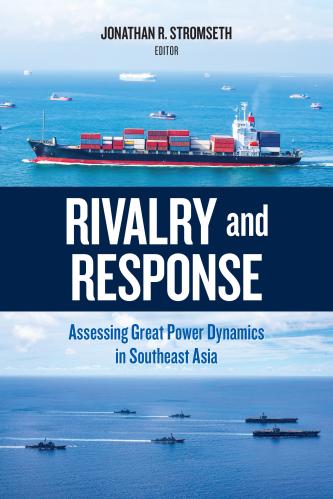
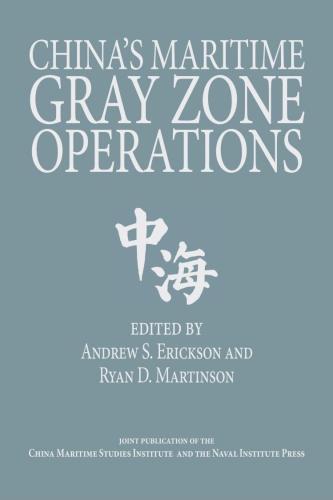




Commentary
Indonesia as a Maritime Power: Jokowi’s Vision, Strategies, and Obstacles Ahead
November 7, 2014